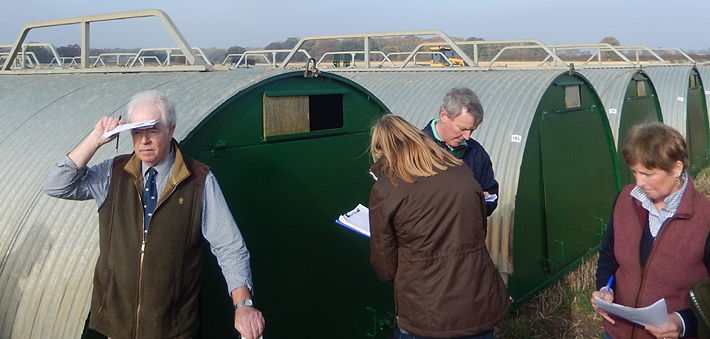The pig price slump continues and despite the efforts of the NPA and many individual producers, although there have been a number of promises of help to alleviate some of the problems on the ground, very little seems to have changed.
Despite the SPP rising by 1.8p to stand at 146.47p, this was due to the fact that on this occasion overweight pig slaughtering statistics were ineligible for inclusion in the overall SPP calculation.
Over the water, EU mainland prices staged a slight recovery last week but are still at exceptionally low levels, with the average European producer price quoted at approximately 106.5p.
UK weekly contribution prices have in the main remained at stand on levels, anywhere between 140p at the top end and 130p at the bottom.
The spot bacon market continues to be oversupplied with pigs and very little space remains available with reports of non-farm assured one off loads of spot pigs being traded at not much more than 85p/kg, although regular sellers should be ahead of this in the 120-125p/kg region.
Cull prices continue to bump along the bottom with UK exporters prices pegged in the 24p – 26p/kg region, not helped by a relatively static Euro which traded today at 85.43p compared with 85.54p a week ago.
Once again, no AHDB weaner averages have been quoted, but contract weaners saw 7kg piglets worth in the £34 – £37/head range, whereas non contract weaners are in some cases virtually impossible to shift or even give away due to the ongoing lack of rearing and finishing space throughout the system because of the overweight pig blockage at the far end of the supply chain.
Put simply, weaner producers cannot afford to keep churning out pigs at current values and because of soaring feed, labour and straw prices rearers and finishers cannot afford to take them through to slaughter weights either, and both sectors continue to be between a rock and a very hard place.
The cost of feed ingredients is also adding to all the problems and challenges faced by the pig industry with UK futures prices for feed wheat quoted at £225/t for December and £200/t for the following September.
UK spot wheat ex farm values have eased by a gnat’s whisker to stand at £209.70/t which is still over £50/t more than it should be as far as pig producers are concerned.
Feed barley remains as scarce as hens’ teeth and continues to rise traded at £211/t for December and £187/t for September 2022.
The proteins markets have remained at generally similar levels on the week with Hipro soya for February – April 2022 at £351/t and May – October 2022 at £338/t.
Rapemeal values are also relatively static at £286/t for December – January 2022 delivery.
And finally, on the ground the crisis situation continues with very little change, and this fallen on deaf ears as far as the Government is concerned.
Although at this stage there are no clear signs of a recovery in the fortunes (or otherwise) of the industry, last week’s slightly firmer EU values could lead to a marginally better outlook in the months ahead if this trend continues, but industry sources are saying it is unlikely that producers will see any significant turnaround until we hit Spring next year which is another 3-4 months away and a long time to wait, especially with red ink all over the bank statement.
Unfortunately the dream cherished by many in the industry of building productive welfare friendly pig finishing facilities has become a nightmare and some difficult decisions will have to be faced in the weeks ahead with industry sources reporting significant numbers of progeny pigs now being slaughtered with no homes to go to.




